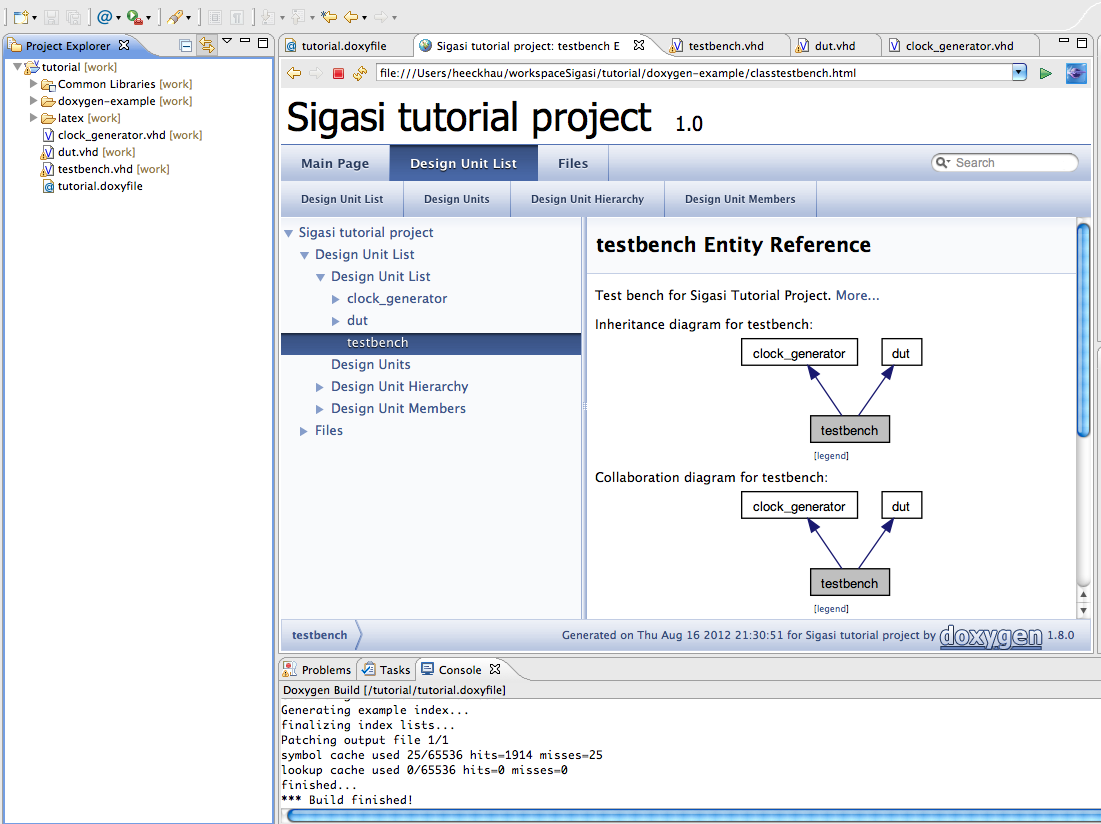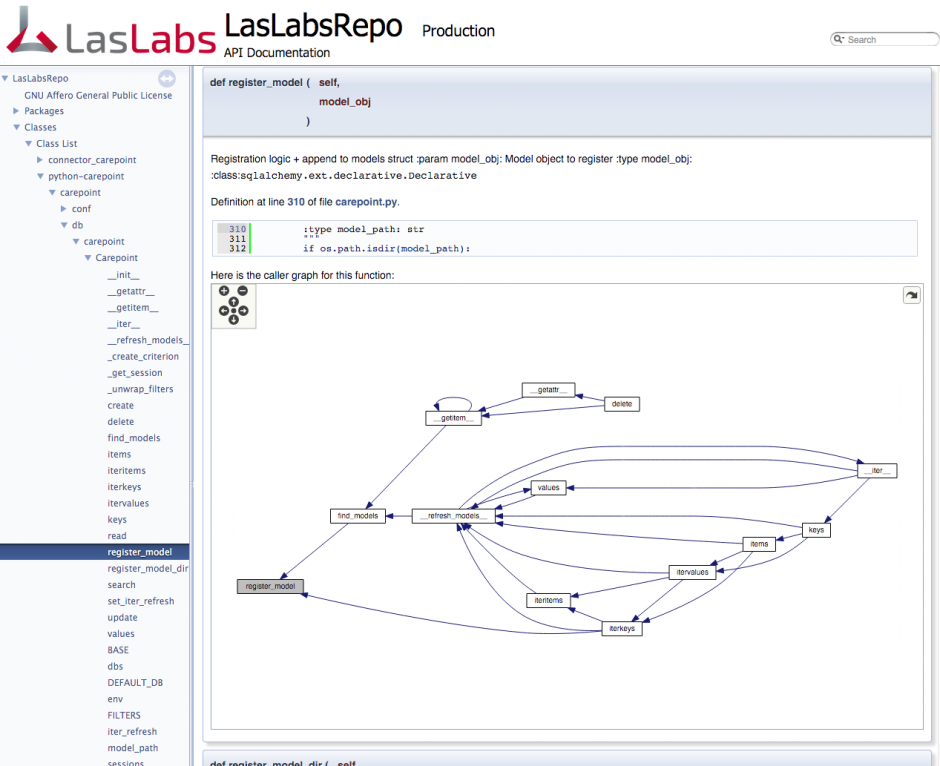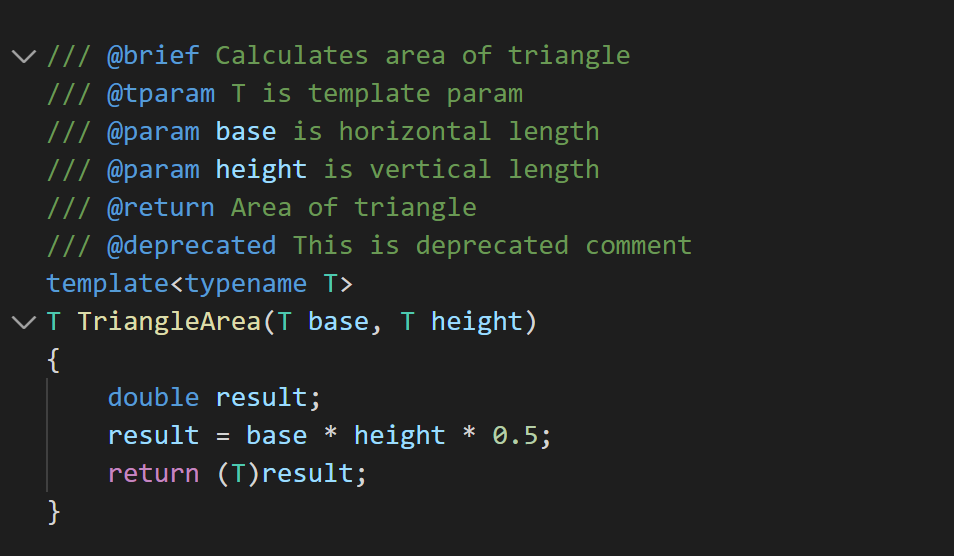
- #DOXYGEN PLUGIN VISUAL STUDIO HOW TO#
- #DOXYGEN PLUGIN VISUAL STUDIO INSTALL#
- #DOXYGEN PLUGIN VISUAL STUDIO CODE#
This task requires a great effort if it is carried out manually, that is why, through the tool Doxygen is possible to generate documentation programmatically, creating outputs in formats such as HTML or LaTeX. It is a task that involves both developers and people from different departments (including the commercial one). Good documentation is an important point in the development of a project. It is important to show the projects we carry out, but it is necessary for users to know what are the advantages of the library or application developed. This is possible due to the explanations that are made about the different functions and characteristics of the project on which the documentation is being generated. Provided you saved the configuration file in the correct location, Doxygen will run correctly, saving its generated documentation to the specified directory, and sending its output to the Visual Studio Output window.Within the application development area, documentation generation is a task which, if done correctly, can boost the use of the application or library that has been created. For each subsequent document generation, use Tools -> Doxygen. You should only run DoxyWizard once for each project that you are documenting. This will ensure that the configuration file is found when you run Doxygen. Select the directory that contains the project’s vcxproj file. This will display the Unsaved changes message box.


Change the Title to Doxygen, the command to point to the Doxygen executable ( C:\Program Files\doxygen\bin\doxygen.exe on my computer), the arguments to $(ProjectDir)\Doxyfile, and initial directory to $(ProjectDir).Open the Visual Studio Tools dropdown menu and select External Tools….
#DOXYGEN PLUGIN VISUAL STUDIO INSTALL#
Download and install the latest Doxygen Windows binary from the Doxygen downloads page.The instructions work for both Visual Studio 2015 and Visual Studio 2017. Adding Doxygen and Doxywizard to the Tools menu is done as follows. However, Doxygen, and Doxywizard, a wizard-based executable for creating the configuration file for use with Doxygen, are command line executables which can easily be run from the Visual Studio Tools menu. There are no extensions for integrating Doxygen with Visual Studio.
#DOXYGEN PLUGIN VISUAL STUDIO HOW TO#
This post will simply show how to use Doxygen with Visual Studio. You should see the Doxygen website for that. You will have to decide if Doxygen is the right tool for you.
#DOXYGEN PLUGIN VISUAL STUDIO CODE#
This article will not discuss how to document your source code for use with Doxygen, nor will it list the advantages and disadvantages of using Doxygen. Although developed in OS X and Linux, there is also an MS Windows executable.

Output formats include HTML, Latex, RTF (MS-Word), PostScript, hyperlinked PDF, compressed HTML, and Unix man pages. Originally created specifically for C++, it now also supports C, Objective-C, C#, PHP, Java, Python, IDL, Fortran, VHDL, Tcl, and D. See DoxyPress and Visual Studio for information on installing DoxyPress and integrating it with Visual Studio.ĭoxygen is a tool for generating documentation from annotated source code. It includes a tool for converting Doxygen projects to DoxyPress.

It may work with earlier versions of Visual Studio, but I have not tried them.ĭoxyPress is an updated fork of Doxygen.


 0 kommentar(er)
0 kommentar(er)
